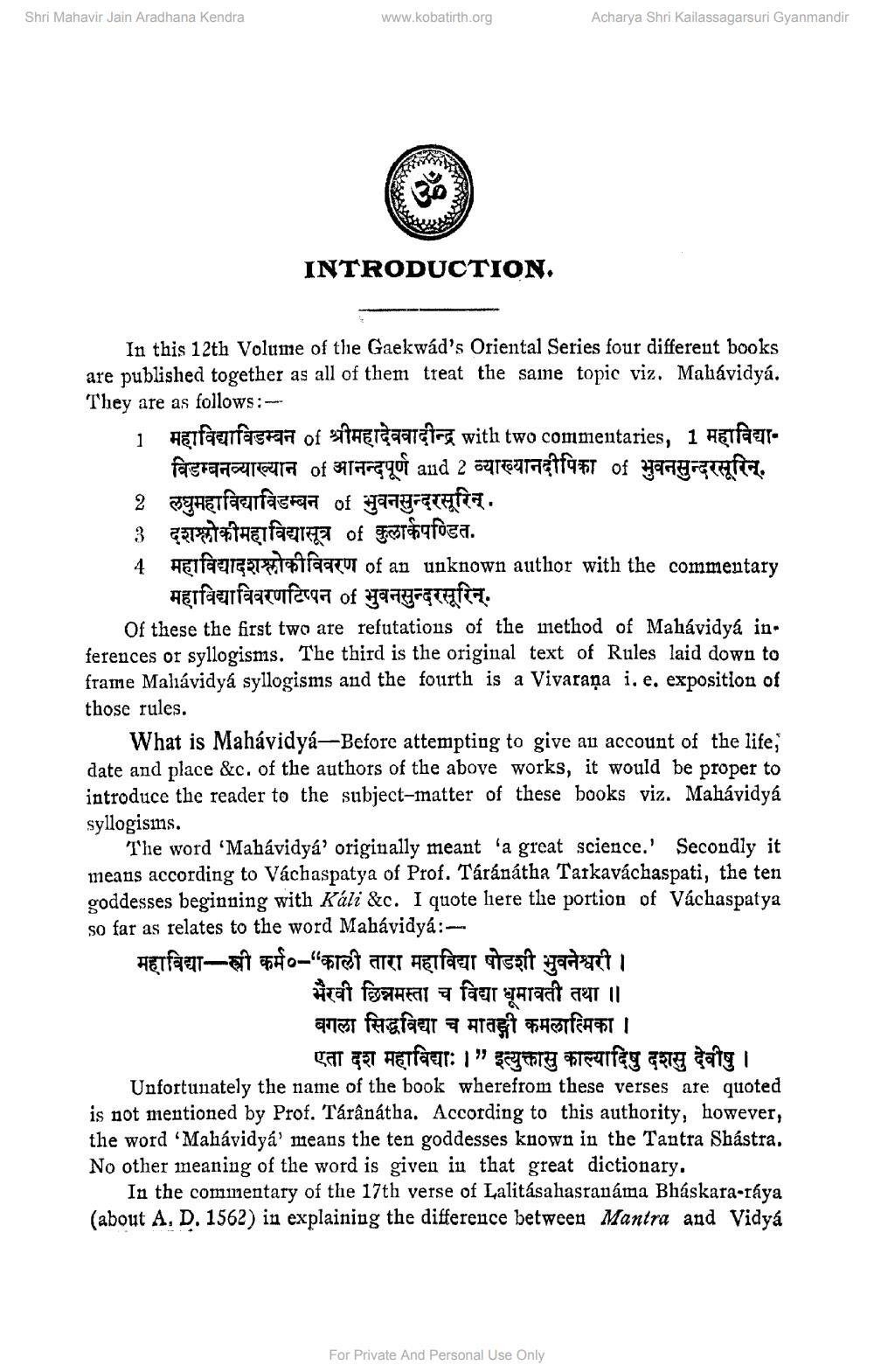________________
Shri Mahavir Jain Aradhana Kendra
www.kobatirth.org
INTRODUCTION.
Acharya Shri Kailassagarsuri Gyanmandir
In this 12th Volume of the Gaekwád's Oriental Series four different books are published together as all of them treat the same topic viz. Mahavidyá. They are as follows:
1 महाविद्याविडम्बन of श्रीमहादेववादीन्द्र with two commentaries, 1 महाविद्याविडम्बनव्याख्यान of आनन्दपूर्ण and 2 व्याख्यानदीपिका of भुवनसुन्दरसूरिन्. 2 लघुमहाविद्याविडम्बन of भुवनसुन्दरसूरिन .
3 दशश्लोकी महाविद्या सूत्र of कुलार्कपण्डित.
4 महाविद्यादशश्लोकी विवरण of an unknown author with the commentary महाविद्याविवरण टिप्पन of भुवनसुन्दरसूरिन्.
Of these the first two are refutations of the method of Mahavidyá inferences or syllogisms. The third is the original text of Rules laid down to frame Mahavidyá syllogisms and the fourth is a Vivarana i. e. exposition of those rules.
What is Mahavidya-Before attempting to give an account of the life, date and place &c. of the authors of the above works, it would be proper to introduce the reader to the subject-matter of these books viz. Mahavidyá syllogisms.
The word 'Mahavidyá' originally meant 'a great science.' Secondly it means according to Váchaspatya of Prof. Táránátha Tarkaváchaspati, the ten goddesses beginning with Káli &c. I quote here the portion of Váchaspatya so far as relates to the word Mahávidyá:—
महाविद्या - स्त्री कर्म० - " काली तारा महाविद्या षोडशी भुवनेश्वरी ।
भैरवी छिन्नमस्ता च विद्या धूमावती तथा ॥
बगला सिद्धविद्या च मातङ्गी कमलात्मिका ।
एता दश महाविद्याः । " इत्युक्तासु काल्यादिषु दशसु देवीषु ।
Unfortunately the name of the book wherefrom these verses are quoted is not mentioned by Prof. Tárânátha. According to this authority, however, the word 'Mahavidyá' means the ten goddesses known in the Tantra Shastra. No other meaning of the word is given in that great dictionary.
In the commentary of the 17th verse of Lalitásahasranama Bháskara-raya ( about A. D. 1562 ) in explaining the difference between Mantra and Vidyá
For Private And Personal Use Only




